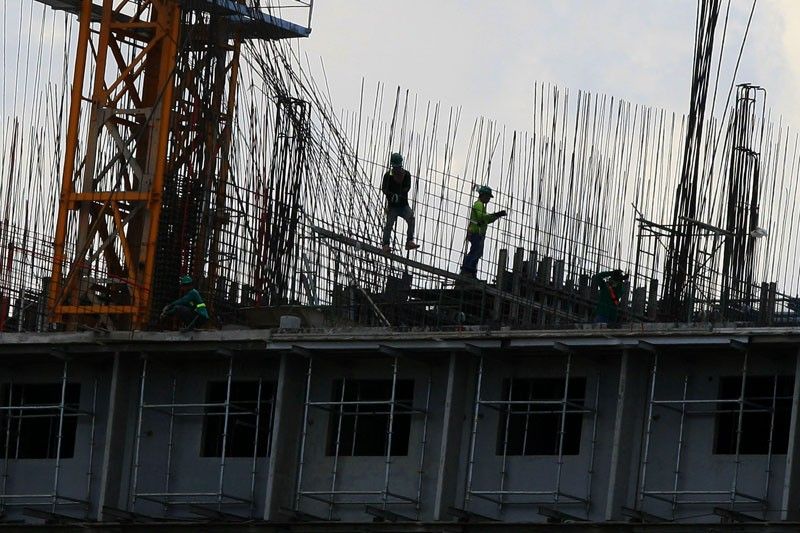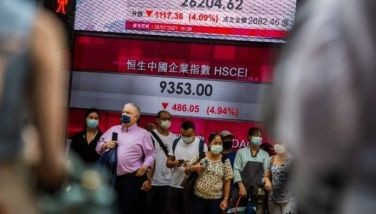Despite inflation spike, GDP grows by 6.8% in Q1 2018

MANILA, Philippines — The Philippine economy grew by 6.8 percent in the first quarter, in line with market expectations, to remain one of the best performers in Asia next to Vietnam and China.
Philippine Statistics Authority data showed that for the 10th consecutive quarter, gross domestic product (GDP) growth hit 6.5 percent and above. For the first quarter, however, it fell short of the government’s full-year 7-8 percent target.
Still, growth in the first three months was faster than the 6.5 percent pace in the first quarter of 2017 as well as 6.7 percent in 2016, an election year characterized by strong consumer spending.
Socioeconomic Planning Secretary and National Economic and Development Authority (NEDA) chief Ernesto Pernia said growth was driven by the upbeat performance in public construction, government consumption and capital formation, “which indicates that our reform efforts are bearing fruit and infrastructure development is accelerating, as planned.”
Increased state spending served as a key driver for economic growth, Budget Secretary Benjamin Diokno said yesterday, noting that the ambitious Build Build Build program led to higher public outlays for infrastructure in the first three months of the year.
He said infrastructure and other capital outlays rose 33.7 percent to P157.1 billion during the period.
Pernia, however, said growth could have been higher during the period were it not for the spike in inflation – the measure of price increases in basic goods and services – which dampened consumption and productivity in several sectors.
He said while the inflationary pressures are transitory effects of the new tax reform law and are expected to ease by yearend, immediate solutions need to be implemented to stem the undesirable effects on the economy.
These include the passage of the law to liberalize rice trade in the country, minimizing lags in the implementation of unconditional cash transfer to the poorest 50 percent of households and the immediate implementation of the Pantawid-Pasada subsidy for jeepney drivers.
“So, inflation is the spoiler, that is why we really need to focus on inflation,” Pernia said.
Inflation jumped to a five-year high of 4.5 percent last April from 4.3 percent in March and 3.2 percent in April 2017.
Inflationary pressures were seen the most in the easing of household consumption growth to 5.6 percent in the first quarter from 6.2 percent in the fourth quarter of 2017 and 5.9 percent in first quarter of 2017.
“There is usually a lag in unconditional cash transfers. These were just distributed recently. And the Pantawid Pasada has not yet been disbursed. So when these have been disbursed, people can be able to adjust (to inflation) with higher purchasing power. So we expect private consumption to pick up also in the coming quarters,” said Pernia.
Diokno said consumption should improve in the coming months as workers begin to digest the stimulative effect of the tax cuts, amounting to about P138 billion in 2018, as well as the unconditional cash transfers for the mitigating measures, worth P24 billion this year.
“I am optimistic that growth in the coming quarters will accelerate to at least the low end of our target, especially with a perceived recovery in the agricultural sector and higher consumer spending,” he said.
On the supply side, Pernia said the agriculture sector grew at a significantly slower pace of 1.5 percent in the first quarter from 4.9 percent last year. Industry was more resilient, growing at a significantly faster pace of 7.9 percent compared with 6.5 percent in the same period last year. The services sector likewise grew at a faster rate of seven percent from 6.7 percent in the comparative period last year.
External demand for Philippine goods, however, has weakened significantly as seen in the easing of exports growth to 2.9 percent in the first quarter from the 21 percent consistent growth average in 2017.
“Net exports worsened during the quarter. This is something we need to keep an eye on,” said Pernia.
Meanwhile, economists and analysts remain convinced the country’s robust growth momentum would be maintained as GDP growth accelerated in the first quarter.
Euben Paracuelles, economist at Nomura Securities, said it is maintaining its GDP growth forecast of 6.9 percent for this year and 6.7 percent for next year.
“Robust growth momentum was also maintained: on a quarter-on-quarter seasonally adjusted basis, GDP growth also rose to 1.5 percent, unchanged from the previous quarter,” Paracuelles said.
The key driver, he said, remains investment growth, which accelerated further to 12.5 percent in the first quarter from 9.3 percent in the fourth quarter, reflecting more progress in the government’s focus to build infrastructure.
The Duterte administration is spending P8.4 trillion for various infrastructure projects under the Build Build Build program until 2022.
ING Bank Manila senior economist Joey Cuyegkeng said it is also retaining its 6.8 percent GDP growth forecast for the year and 6.9 percent for 2019.
“We expect fiscal spending, business and household spending to continue to drive growth in 2018 and 2019,” he said.
“These drivers of growth can easily withstand measured monetary tightening this year and next. Market interest rates have reflected higher inflation and higher policy rates. We have seen strength in the economy during this period of rising financing costs,” Cuyegkeng said.
ANZ Research said growth remained on a solid footing in first quarter, driven by the 8.7 percent increase in domestic demand. Government consumption spending also accelerated at a robust pace.
“Overall, growth prospects in the Philippines remain robust with the tax reform-induced infrastructure spending plan of the government set to reinforce the already strong domestic demand conditions,” ANZ Research said. – with Mary Grace Padin, Lawrence Agcaoili.
- Latest
- Trending






























